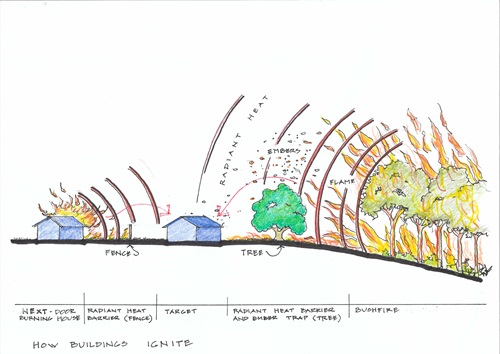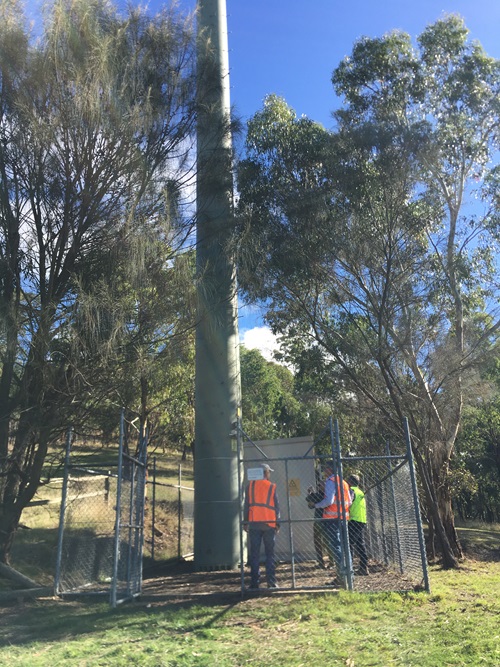Whether it’s bushfire, flood or cyclones, each storm season brings with it the fear our phones will fail when we need them most.
Telecommunication towers are vulnerable to damage from bushfires and storms. Yet they play a critical role in connecting communities to help through these extreme events.
Therefore, the job of improving our telecommunications network is key to building a resilient Australia.
That’s why we’ve teamed up with Optus to better understand where the risks of fire damage are to its network. This work will also help prioritise upgrades to reduce the network’s vulnerability in future bushfires.
Hazards under the spotlight
We’re pinpointing danger spots around 85 infrastructure sites across Victoria, NSW, WA, SA and Queensland. The data includes information on the local topography, the amount of combustible vegetation (known as fuel load), vegetation type and local bushfire weather severity.
We use this information to study the potential impacts of embers, fire radiation, and flame on and around telecommunications equipment. With this data, we can map sites most at risk and prioritise site improvements.
Two demonstration sites in Victoria (Seville East and Dixons Creek) are the first cabs off the rank. Optus uses the learnings from them to implement the recommended actions to minimise potential harm.
These sites also provide examples for other infrastructure companies to learn how best to protect their more vulnerable infrastructure.
Our researcher Justin Leonard, Bushfire Adaptation Leader, said the research can inform resiliency decisions across a number of industries.
“These include telecommunications, energy and emergency services. For example, improving power infrastructure can help decrease outages in bushfires,” he said.
“As a result, it improves the resilience of telecommunications services as these networks rely on power.”

Building disaster resilience requires an understanding of the hazards to telecommunication towers and supporting infrastructure, as illustrated here. ©CSIRO, Sam Thompson.
National Bushfire Intelligence Capabilities
Justin said the project is an early indicator of the relevance and utility of work scientists will do through the National Bushfire Intelligence Capabilities (NBIC). The NBIC was developed with Emergency Management Australia in response to the devastating 2019-20 bushfires.
It will be delivered through the National Recovery and Resilience Agency, which is also promoting national sharing of fuel load and hazard reduction information in line with the Intergovernmental Agreement on Data Sharing.
Improving disaster resilience

Optus infrastructure at Dixon’s Creek in Victoria
Lambo Kanagaratnam, Optus Managing Director Network, said it’s a work in progress.
“Optus continuously aims to improve our network’s resilience as we know communities rely heavily on our services. Especially during natural disasters and extreme weather events,” he said.
“We’ll be working with our industry association, Communications Alliance, to arrange for Optus to share with other companies and organisations what we’ve learned through our work with CSIRO.
“The more we do, the more we learn. And the goal is to take these learnings so that future mitigations are improved and create even more resiliency.”
As we head into the next bushfire season, we’ll continue to collaborate to build on a 70-year history of bushfire research. Ultimately, it will help Australia respond to a changing and variable climate and build the disaster resilience of our nation.

